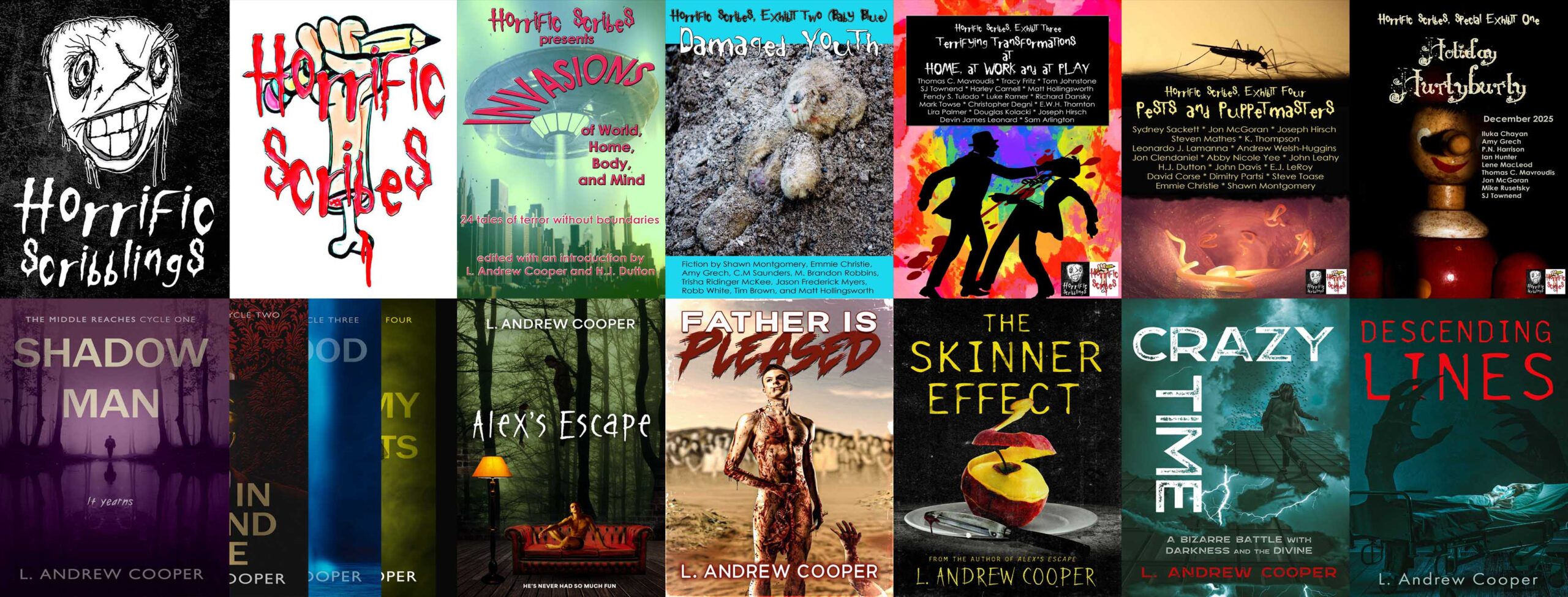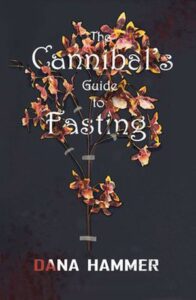Spotlight: Dana Hammer’s The Cannibal’s Guide to Fasting (2022)
A Review
Dana Hammer’s The Cannibal’s Guide to Fasting is a smart, funny, and delightfully sickening tale set in a world where a virus causes a significant part of the population to crave human flesh. Igor, the protagonist, is infected but reformed, not a man to follow all the rules of the oppressive uninfected population but still someone who prefers fasting to indulging his cannibal tastes. The title is a little misleading—it made me expect something akin to the guides-as-storytelling that were in vogue for a while (the best example being Max Brooks’s Zombie Survival Guide). Instead, it is better, a horror-comedy-adventure that follows Igor on a quest to stop his fellow infected from going from fasting to feasting and endangering everyone.
Even though the book is a light, fun read, its straightforward and highly readable prose and humorous focus on cannibals looking for places in society don’t stop it from delivering rich characters and thought-provoking story elements. Igor is an excellent lead. A giant of a man, he has a wide streak of sweetness (we meet him collecting wildflowers). He can be painfully oblivious at times, but he has prowess in science to match his prowess as a fighter, multi-dimensionality that helps keep him dynamic. His interactions with others are always colorful: Hammer deftly shows us his perspective while allowing us to see other psychological aspects of the exchanges that he may be missing. In addition to giving her characters a surprising amount of life, Hammer also gives her story a great amount of resonance with political and social issues. The master metaphor might be addiction, but the infected are an oppressed minority, which opens the story to many other figurative tie-ins. People’s reactions to the infected, and some aspects of infected people’s behaviors, summon rhetoric like that surrounding immigration and disparities in the justice system related to wealth as well as “hidden” human qualities such as gender and sexuality, HIV status, and mental health. Cannibals become an uncomfortable limit case for those who associate human difference with “tolerance.”
Readers who know many vampire and zombie narratives will likely find quite a few plot points familiar, but Hammer handles her story with such wit and style that Igor’s adventure never fails to be compelling. A bit more copyediting would help, but overall the book is in great shape. For readers with a wicked sense of humor and a… hunger… for a satisfying read, I give this delicious book a strong recommendation, and for those of you who count such things, five simmering stars.
The Cannibal’s Guide to Fasting will be released September 6, 2022 but is available for pre-order on Amazon and at many other retail outlets now!
An Interview with Dana Hammer about
The Cannibal’s Guide to Fasting (2022)
questions by L. Andrew Cooper
You and I discussed cannibalism when we met briefly at the Hollywood Horrorfest film festival. What makes this topic so compelling?
It’s the original cultural taboo. I think we’re all hard-wired to fear being eaten, for good, biological reasons. But we are supposed to feel safe around our own species. Any other animal might take a bite out of you at any time, with varying degrees of pain and damage, but we’re supposed to be able to trust that humans will not do that. The idea that we’re not safe from being eaten, even by our friends and family and neighbors, is deeply disturbing. Also, the type of person who goes out of their way to break this taboo is freaking terrifying.
Writers are supposed to “write what we know,” but I don’t think many people have known someone like your novel’s protagonist, Igor. Did a person or people in your life inspire him? What prompted you to invent such an unforgettable man?
I don’t know anyone like Igor, but I wish I did. I love a “gentle giant”, and I especially love a character who seems like a villain but is really a big softie. Also, there’s this stereotype that muscular guys who work out a lot are dumb, and I have no idea where this came from. I think the “big stupid ox” is an easy character to write, because it’s been done so often, but I wanted to do something different. I wanted to write about a bodybuilder who was also intelligent. Though at times Igor can be a bit…unaware…he is never stupid.
My review describes The Cannibal’s Guide to Fasting as horror-comedy-adventure, but how do you think of it? What sorts of reactions do you most want to get from readers?
I think your description is apt. I might also add “dystopian.” But I think this is a book that has something for everyone. It has horror, comedy, (soft) science fiction, dystopian, romance, adventure, satire, and drama. I want people to really love the characters and I want all my readers to take away something that resonates with them.
Your brief author bio clarifies, “She is not a psychopath.” It’s a funny line, but for centuries (at least), people who write about dark and scary subjects have been accused of being dark and scary people. How much do you think about that kind of judgment? In your novel, Igor gets a lot of shit because he looks scary. To what extent would you say your novel is about the ways people judge what they fear?
There’s the old joke about writers and their search histories, and for the most part, this is 100% accurate. I’m probably on a number of watch lists for the creepy shit I research. A lot of what I read and watch and listen to is considered “weird” or “scary” by many people. And I think because of the stuff I write, there will always be people who make assumptions about me. When talking about one of my projects at a dinner party one time, a man I barely knew snapped at me — “What the hell is wrong with you?” He was not joking. And it wasn’t even one of my more “out there” projects.
I wish I was one of those people who didn’t care what people think of me, but I totally do. I don’t want to be thought of as a creepy, weird woman. And my day-to-day life is the opposite of creepy and weird. I’m an Orange County housewife for fuck’s sake. I do yoga. I have brunch with my book club. I own like seventeen pencil skirts. I volunteer at my child’s school. I’m basically June Cleaver.
And yet, I still get the “weirdo” label.
Though I don’t think anyone thinks I’m a dangerous person.
I think what it boils down to is, some people like oddities and dark stories and bizarre people. Some people have a high tolerance for craziness and quirkiness and deviance. Some people have little to no tolerance for any of that. Some people — like me —would totally be friends with Igor. But many people I know would not. And I think these preferences are hard-wired. You’re either down with the Igors and cannibals and Esteban Zappas of the world, or you’re not. And neither type of person understands the other very well.
You are also an accomplished screenwriter and playwright. What other projects do you have on the horizon?
I have a lot going on! I have two one acts that will be performed this year — one called “A Helping Hand” will be done by Force of Nature Productions this September, and the other, “Spotless” will be a staged reading done as part of the OCPA Discoveries Series, on August 27th at Newport Theater Arts Center. I have two short stories coming out in two anthologies. “A Halloween Visit” will be published in Literally Dead, on October 1st. The other story, “Meteorite” will be published in Blood Fiction, later this summer (I’m not sure the exact date.) I just finished a draft of a middle-grade fantasy novel called My Best Friend Athena, and I’m hoping to get that published soon. We will see.

